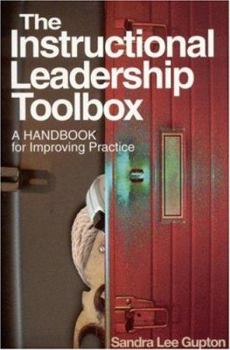The Instructional Leadership Toolbox: A Handbook for Improving Practice
Select Format
Select Condition 
Book Overview
This handbook provides principals with practical yet reflective ways to improve their instructional leadership skills to ensure that no child is left behind.
Format:Paperback
Language:English
ISBN:0761978267
ISBN13:9780761978268
Release Date:October 2002
Publisher:Corwin Publishers
Length:248 Pages
Weight:0.70 lbs.
Dimensions:0.5" x 6.0" x 9.0"
Customer Reviews
1 rating
A compendium of good practice
Published by Thriftbooks.com User , 22 years ago
What a great book and a good read!There is a burgeoning interest in instructional leadership across the world. This phenomenon has occurred because of two major, inter-related influences:1. A change of focus from inputs to measuring outcomes in the 1970s and 80s; and2. Instructional leadership was a logical extension of the effective schools research.Sandra Lee Gupton has done a comprehensive job in analysing the literature on instructional leadership. The one thing that marks her as different from the other writers in this field is her starting point. Gupton starts by acknowledging that the principal is not the sole leader in the school:A more integrated, democratic approaching today's principalship is not merely preferred: it is increasingly essential for dealing well with today's schools and students. (Gupton, 2003, p.vii). This position has taken a long time to arrive since Hallinger (1992) and Murphy and Hallinger (1992) described the change from the managerial to transformational principalship. The prolific meta-analyst Larry Lashway (2002) saw this change as a move away from the "... images of heroic leaders single handedly keeping the school on track."Secondly, I thought that Sandra Lee Gupton made each chapter easy reading and her summary- "Pointers for the principal" were very useful. Corwin Press is to be congratulated on releasing three excellent books on change in schools. This book by Gupton, Elaine McEwan's "7 steps to effective instructional leadership" and the excellent text by Crowther et al. "Developing teacher leaders."





